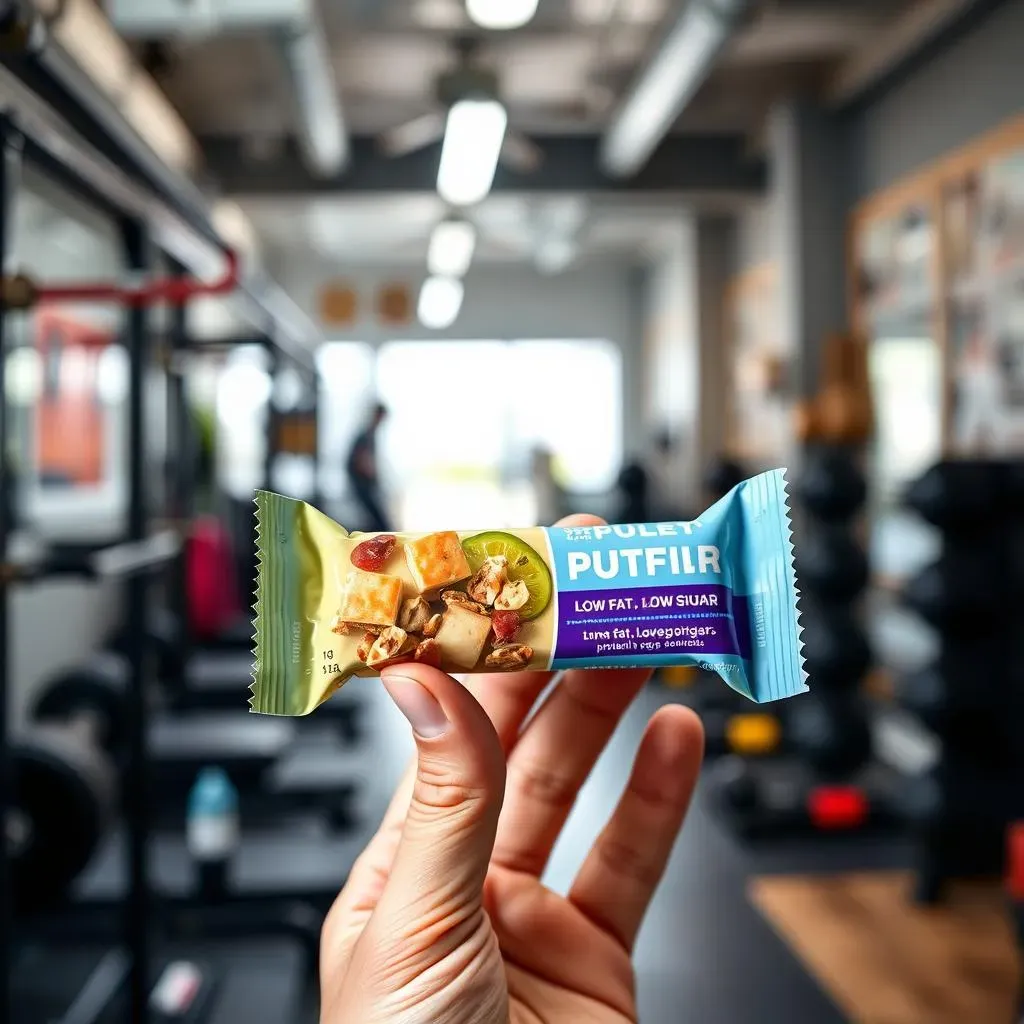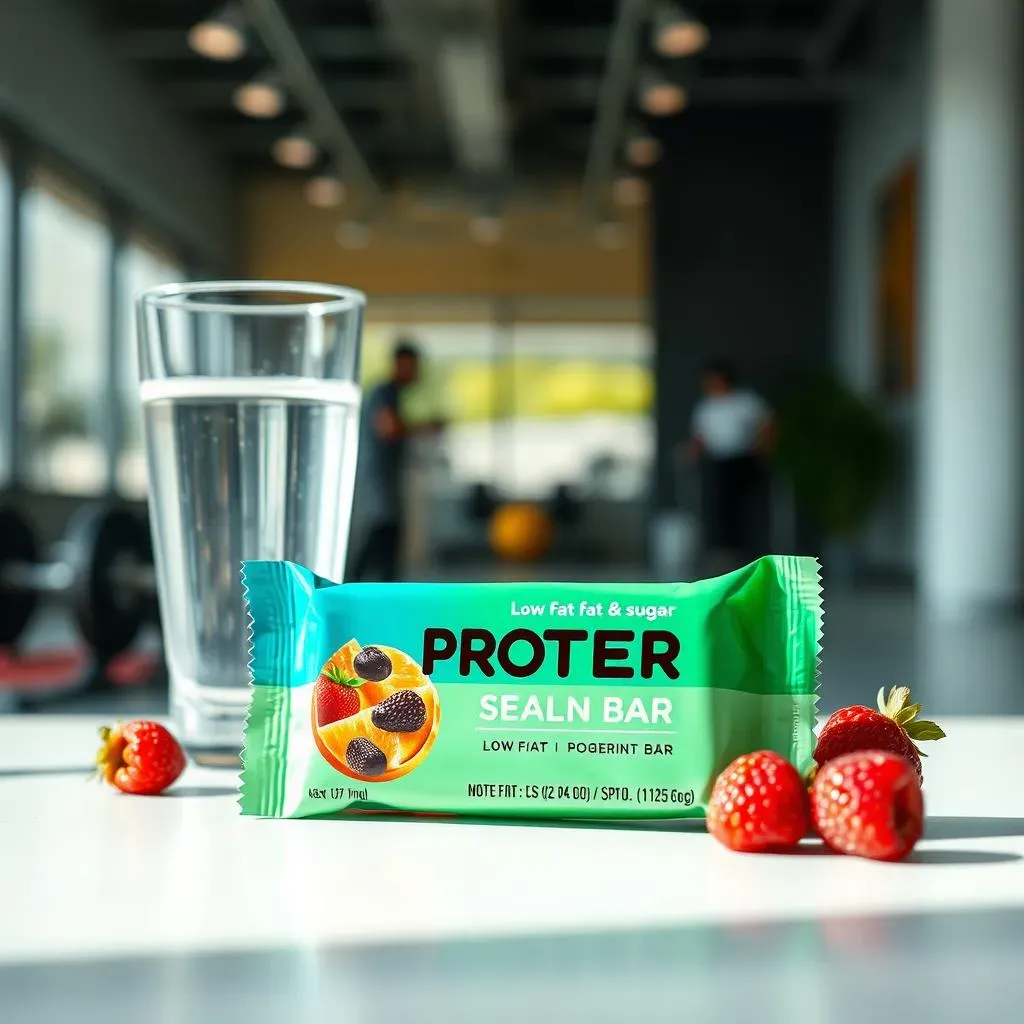Table of Contents
Let's face it: the world of protein bars can be a confusing jungle. Promises of muscle growth and energy boosts often come with a hefty dose of added sugar and unhealthy fats. But what if you could enjoy the convenience of a protein bar without compromising your health goals? This article is your guide through the maze of "low fat and sugar protein bars," helping you decipher nutrition labels and make informed choices. We'll explore the crucial nutritional factors to consider when selecting a bar, highlighting the best options currently available on the market. Feeling adventurous? We'll even share some delicious, easy-to-follow recipes for creating your own low-fat, low-sugar protein bars at home. By the end, you'll not only understand how to choose the perfect bar but also how to seamlessly integrate them into a balanced, healthy lifestyle. Get ready to unlock the power of protein without the sugar crash!
Understanding the Nutritional Landscape: What to Look For
Understanding the Nutritional Landscape: What to Look For
So, you're diving into the world of low-fat, low-sugar protein bars? Fantastic! It's a bit of a wild west out there, so let's get you armed with the knowledge you need. First things first: protein content. You want a bar boasting at least 10-15 grams of protein per serving – that's your muscle-building, satiety-inducing powerhouse. Don't just look at the total grams, though; check the *source* of the protein. Whey, soy, pea, and brown rice protein are all good options. For vegan options, check out our guide to vegan low-fat protein bars.
Next up, let's tackle the sugar. Aim for bars with less than 5 grams of added sugar. Many bars sneak sugar in through sneaky names like "maltodextrin" or "corn syrup solids." It's a nutritional minefield! Reading the ingredient list carefully is crucial. Artificial sweeteners are another red flag – some people experience digestive issues with them. Natural sweeteners are a better bet, but even those should be consumed in moderation. If you're feeling ambitious, why not try making your own? We have a great recipe for homemade bars here.
Nutrient | Ideal Range | Why it Matters |
|---|---|---|
Protein (grams) | 10-15 | Muscle building, satiety |
Added Sugar (grams) | <5 | Blood sugar control, overall health |
Total Fat (grams) | <5 | Heart health, weight management |
Fat content is the next biggie. You want low total fat, ideally under 5 grams per serving. But it’s not just *how much* fat but also *what kind*. Trans fats are a big no-no, and even saturated fats should be kept to a minimum. Healthy fats, like those found in nuts and seeds, are your friends in moderation. Unsaturated fats are better for you overall. For low-carb options, check out our selection of low-fat low-carb protein bars!
Finally, don't forget fiber! Fiber keeps you feeling full, aids digestion, and helps regulate blood sugar. Look for bars with at least 3-5 grams of fiber. This is also a great way to check for added ingredients. A long ingredient list with a lot of unpronounceable ingredients isn't a good sign. Keep it simple and clean!
- Read the ingredient list carefully.
- Prioritize whole food ingredients.
- Check for added sugars and artificial sweeteners.
- Choose bars with a good source of protein.
- Aim for low fat and high fiber.
Navigating the Supermarket Shelves: Top Picks for LowFat, LowSugar Protein Bars
Navigating the Supermarket Shelves: Top Picks for LowFat, LowSugar Protein Bars
Decoding the Labels: What to Look For
Okay, so you've armed yourself with the knowledge of what makes a good low-fat, low-sugar protein bar. Now, let's hit the supermarket! The sheer variety can be overwhelming, but don't panic. Remember those key numbers: low added sugar (under 5g), decent protein (10-15g), and minimal total fat (under 5g). Start by scanning the nutrition facts panel, then scrutinize the ingredient list. Long lists with unpronounceable chemicals are a warning sign. Look for recognizable whole-food ingredients instead. Need some inspiration? Check out our guide to the best low-fat, low-sugar protein bars!
- Check the nutrition facts panel first.
- Scrutinize the ingredient list for recognizable whole foods.
- Look for bars with minimal added sugars and artificial ingredients.
- Compare protein, fat, and fiber content between different brands.
Top Brands and Their Offerings:
While specific brands fluctuate in availability and formulations, here are some general categories to look for. Many brands now offer low-fat, low-sugar options. Look for bars that clearly state their commitment to reducing added sugar and unhealthy fats. Some brands are more transparent than others, so take the time to read reviews and compare ingredients. For a deeper dive into specific brands and their offerings, check out our low-fat protein bar page. It's a constantly evolving landscape, so stay informed!
Brand Type | Typical Features | Things to Watch Out For |
|---|---|---|
Plant-Based | Often higher in fiber, naturally lower in fat | Can sometimes be lower in protein; check the label carefully. |
Whey-Based | Generally higher in protein, good source of essential amino acids | Can be higher in saturated fat; choose carefully. |
Other Protein Sources | Variety of protein sources (e.g., pea, brown rice, etc.) | May contain added ingredients or unusual sweeteners. |
Beyond the Big Names: Finding Hidden Gems
Don't be afraid to venture beyond the well-known brands! Smaller companies and local producers often create fantastic, low-fat, low-sugar protein bars with unique flavor combinations and high-quality ingredients. Farmers' markets and health food stores are great places to discover these hidden gems. Remember to always check the nutrition information and ingredient list before purchasing, regardless of the brand. You can also explore recipes for making your own bars at home; we have a comprehensive guide on making your own high-protein, low-fat, low-sugar bars!
“The best protein bar is the one you’ll actually eat consistently.” - Anonymous Fitness Enthusiast
Homemade Bliss: Crafting Your Own Perfect LowFat, LowSugar Protein Bar
Homemade Bliss: Crafting Your Own Perfect LowFat, LowSugar Protein Bar
Taking Control: Why Homemade is Best
Let's be honest, store-bought protein bars can be a bit of a gamble. You might find a winner, but more often than not, you're left with a bar that's loaded with sugar, artificial sweeteners, or questionable ingredients. Making your own bars gives you complete control over the ingredients and allows you to tailor the recipe perfectly to your taste and dietary needs. Plus, it's surprisingly easy! Need some inspiration? Check out our ultimate guide to homemade low-fat protein bars for a detailed step-by-step process.
Think of it like this: you wouldn't settle for a pre-made pizza if you could make a delicious, healthy one at home, right? The same principle applies to protein bars. By making your own, you're investing in your health and your taste buds. You'll discover the satisfaction of crafting a truly nutritious and delicious treat that meets your specific needs, and you'll impress your friends and family with your culinary skills.
- Control over ingredients
- Customization to your taste
- More nutritious and healthier
- Cost-effective in the long run
- A fun and rewarding experience
Simple Recipe Ideas to Get You Started
Don't let the idea of homemade protein bars intimidate you. It's far simpler than you might think. The basic formula involves combining a protein source (whey, casein, plant-based protein powder), a binder (nuts, seeds, oats), and a sweetener (dates, stevia, honey – use sparingly!). You can experiment with different flavor combinations and add-ins to create your perfect bar. For low-carb options, consider using almond flour or coconut flour as a base. Our homemade high-protein, low-carb, low-fat bars recipe is a great starting point.
For example, a simple recipe could include: 1 cup rolled oats, ½ cup protein powder, ¼ cup nut butter, 2 tablespoons honey (or other sweetener), and a pinch of salt. Mix everything together, press into a baking pan, and bake until golden brown. Cool, cut into bars, and enjoy! Remember to adjust the sweetness and ingredients to your preferences. Don't be afraid to experiment and have fun with it. After all, the best part of making your own bars is discovering your perfect combination.
Ingredient | Function | Alternatives |
|---|---|---|
Protein Powder | Provides protein | Greek yogurt, cottage cheese |
Oats/Nut Flour | Binder, adds texture | Almond flour, coconut flour |
Nut Butter | Adds flavor, healthy fats | Seeds, avocado |
Sweetener | Adds sweetness (use sparingly!) | Dates, stevia, erythritol |
Beyond the Bar: Incorporating LowFat, LowSugar Protein Bars into a Healthy Lifestyle
Beyond the Bar: Incorporating LowFat, LowSugar Protein Bars into a Healthy Lifestyle
Smart Snacking Strategies
So, you've got your low-fat, low-sugar protein bars – fantastic! Now, let's talk about how to best incorporate them into your daily routine. Think of them as strategic tools in your healthy eating arsenal, not a magic bullet. They're perfect for bridging the gap between meals, preventing those dreaded energy crashes, or providing a quick protein boost after a workout. Avoid using them as a replacement for whole, unprocessed foods; instead, view them as a convenient supplement to a balanced diet. For more ideas on healthy snacking, you might find our guide on low-calorie, high-protein snacks helpful.
Consider your timing. A protein bar before a workout can provide sustained energy, while one after a workout can aid muscle recovery. If you're using them as a between-meal snack, pair them with a piece of fruit or a handful of vegetables for added nutrients and fiber. This will help prevent a blood sugar spike and keep you feeling fuller for longer. Remember that moderation is key; too many protein bars can still lead to unwanted weight gain or other health issues. It's all about balance!
- Use as a supplement to a balanced diet
- Time your consumption strategically
- Pair with fruits or vegetables for added nutrients
- Practice moderation
Beyond the Snack: Protein Bars in a Broader Diet
Integrating low-fat, low-sugar protein bars into a broader healthy eating plan is easier than you think. They can be a valuable tool for managing hunger, supporting muscle growth, and maintaining energy levels throughout the day. However, remember they are a *supplement*, not a replacement, for whole, unprocessed foods. A balanced diet rich in fruits, vegetables, lean proteins, and whole grains remains crucial for optimal health. For more recipes and ideas, check out our low-carb, low-fat protein bar options.
Think about incorporating them into your meal prep. They can be a great addition to a packed lunch, providing a protein-rich component to your meal. They can also be useful when traveling or when you're short on time and need a quick, nutritious snack. Just remember to plan your meals and snacks around whole, unprocessed foods, and use the protein bars to fill in any nutritional gaps or to satisfy a sudden hunger pang. Always check the ingredients and nutritional information to make sure it aligns with your overall diet goals.
Meal | How to Incorporate Protein Bars |
|---|---|
Breakfast | Pair with yogurt and fruit |
Lunch | Include in a packed lunch |
Snack | Enjoy with a piece of fruit or vegetables |
Post-Workout | For a quick protein boost |
